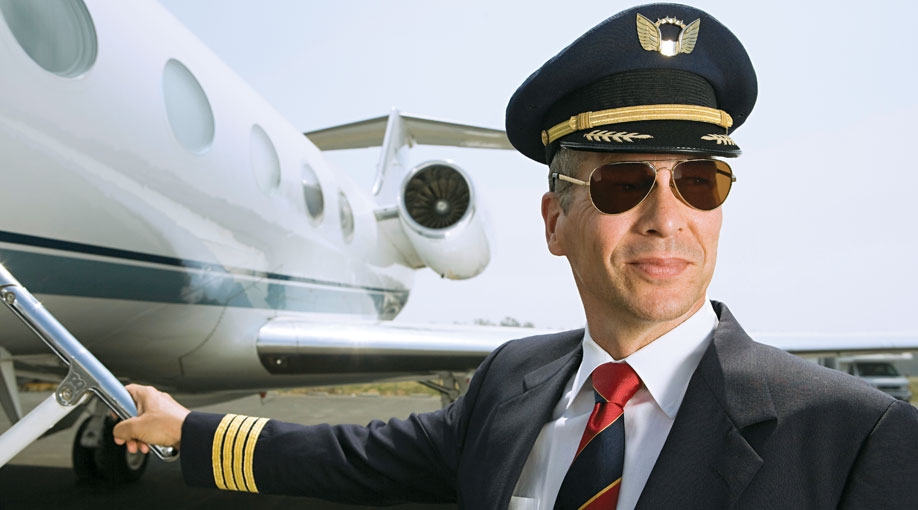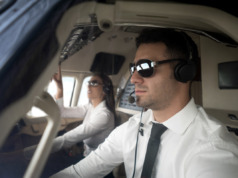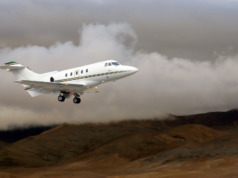
Your pilots and technicians are the best of the best. Or not. The fact is that 80% of professionally flown aircraft accidents are caused by human factors. With that in mind, one of the most critical waypoints in an aviation professional’s career is the graceful good bye.
Unlike the airlines, noncommercial business aviation has no mandatory retirement age. This leaves the matter up to the owner, the operator, or the pilot. Without a regulatory retirement standard, the end game can be awkward and filled with heightened safety risks.
To understand how pervasive this problem is, an audience of 200 business aviation professionals recently was asked if they’d ever had to intervene when an older pilot’s performance was substandard. Nearly every hand was raised. Why is this such a serious issue?
FAA regulations require a pilot not to fly if he or she has any condition that “make[s] the person unable to perform those duties or exercise those privileges.” These regulations are not actively enforced; compliance is up to the individual and the employer.
Consider: Do you really want your valuable asset, key passengers, and yourself in the back of an airplane that is flown and maintained on the honor system only?
- Example: A corporate jet had a hard night landing that damaged the aircraft. The aging pilot later admitted he’d lost vision in one eye. He had not told the FAA nor had he grounded himself.
You assume your corporate retirement policy applies to aviation professionals. Or, your company doesn’t have a mandatory retirement age, so you shouldn’t have one for your aviation department. - Consider: Without a set retirement age, how can you have an effective succession plan or run the department organization in a proactive manner?
- Example: A company assumed its number two pilot, the eldest of three aviators, would retire at age 65. Economic and personal pressures made it inconvenient for him to do so. He stayed on for more than two years. During that time, the department lost its prized junior person, when a chance for earlier advancement came up. The company ended up with two new hires at net cost of more than $300,000.
Your aviation department is outsourced. Therefore, staff retirement policies are the responsibility of the management company. - Consider: Very few management companies have formal retirement policies.
- Example: An aircraft owner who did not want to deal with aviation HR issues opted to outsource the department. Despite promises to the contrary, the management company had no retirement policies. The client was in the awkward position of being lobbied by the management company for financial and leadership assistance for upcoming retirees.
Your aviation staff members are professionals. They should tell you when they want to or need to stop working. Besides, today’s age 70 is yesterday’s 60. - Consider: Most aviation professionals love what they do. Flying is who they are. Often, their perception of “time to stop” is well after their skills – or simply their stamina – have declined, raising operational risks. The Seattle Longitudinal Study on Adult Cognitive Development indicates people’s various cognitive skills decline at different ages and rates.
- Example: Situational awareness, problem solving, and short term memory are all crucial skills for aviation professionals, and are among the first to decay. However, verbal ability is among the most enduring. As a result, an aging staffer at a large company made more mistakes but was able to talk his way out of them. This dichotomy masked the escalation of safety risks.
An equitable endgame must be part of the plan from the beginning. If aviation professionals are expected to adhere to strict fitness for duty and retirement date standards, it must be to their benefit to do so. In other words, make it easy for them to comply with mutually understood expectations, and if a medical issue does arise, support them. The following are eight commonly used approaches:
1 Employment contract – An employment contract codifies the understandings and expectations for both parties. It protects the company and the employee. When written correctly, employment contracts have withstood EEOC age discrimination suits by employees who tried to challenge the agreement.
2 First Class Medical Certificates – The standard practice in business aviation for flight crewmembers is to obtain and maintain a current First Class Medical Certificate. The best practice is that the medical examination be conducted by an Aviation Medical Examiner who is selected and approved by the company. Otherwise, some aviators could seek practitioners who are less than rigorous in the conduct of their exams.
3 Medical advisory support – If a staff member develops a medical challenge, the company should provide support for his/her full diagnosis, treatment, and recuperation and reinstatement of the individual’s flying privileges. The FAA is quick to suspend a pilot’s medical certificate for a known problem, and the reinstatement process is tedious and fraught with bureaucratic hurdles. You might choose to enlist the aid of a firm, like Aviation Medical Advisory Service, to address the challenge.
4 Disability and Loss of License Insurance – Standard disability insurance does not fully cover the differential in the income loss pilots incur when they become ineligible to fly. The company should seek supplemental insurance to cover that gap appropriately. This greatly reduces the financial incentives for crewmembers to hide a condition that could impair their performance and raise operational risks.
5 Pick an age and stick with it – The most common age for business aviation retirement policies is 65. That age has the advantage of being the sweet spot of the precedent set by the airlines, age group wellbeing, and opportunity for the individual to continue to work elsewhere.
6 One-time financial incentives to retire – A growing number of companies have created a “retirement bonus” to induce separation no later than the desired date. An employee who opts to stay on loses the bonus. Obviously, the amount of the bonus needs to be compelling.
7 Make it an occasion to celebrate – Forward-thinking companies celebrate their pilots’ retirement dates at the end of the year. This practice allows for participation in holiday celebrations, vacation accrual, and bonuses. It is a cultural and morale booster for the retiree and the group.
8 Help them start their next career – A “retiring” aviation professional who has no disqualifying health issues may have excellent earning potential. Options are flying for companies with more liberal age policies, or as a contract pilot providing supplemental flight service for other owners. Or he or she could assume duties as a nonflying department manager or dispatcher. Providing a strong letter of recommendation can make that transition easier.
With effective planning, policies, and support, a career of great service and performance can be capped by a graceful goodbye. BAA
Pete Agur, Jr. is chairman/founder of The VanAllen Group, a management consulting firm specializing in the business of business aviation. With an MBA and a BS in Aeronautical Sciences, he is an NBAA Certified Aviation Manager.




